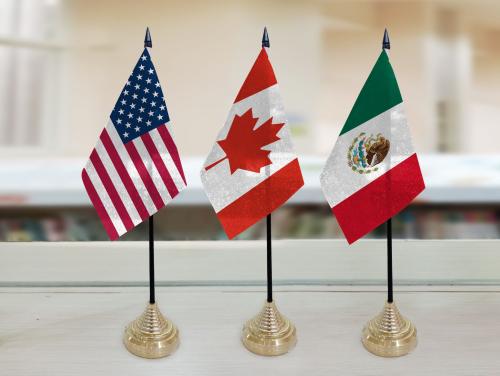National and local governments around the world often struggle to design and implement new policies to foster the creation of new firms. The rationale is that small- and medium-sized enterprises (SMEs) are engines of labor creation. For example, in the U.S., according to the Census Bureau, SMEs employ about half of the labor force. This share is typically higher in developing nations.
Nowadays, some of these policies focus on hi-tech start-ups. Start-ups can not only create employment in the medium run, but can also innovate and push the world’s technology frontier further. Furthermore, some would claim that the externalities generated in a vibrant start-up environment would justify a market intervention.
But, how do you get the entrepreneurship ball rolling in a developing country? Clearly, limited financing is an important market failure that keeps small firms from emerging more frequently in developing countries. Volatility and weak institutions in developing nations imply lending risks are high even for large and already established firms. Entrepreneurs often lack collateral or other guarantees required by formal lending institutions. On the other hand, equity investors could make sizeable profits by hedging funds in several start-ups. It’s a classic “chicken-and-egg” problem: Lack of financing constrains the cultivation of entrepreneurs, and without entrepreneurs there are not enough hedging opportunities to attract investors. This “failure,” together with the possible externalities that the existence of these start-ups could generate, could be a good enough reason to justify government intervention. But, what is the optimal policy here?
There are two possibilities: Fund the firms or fund the funds. The former implies the government could act as an investor in the market by selecting and investing in new start-ups. This is one way the government could share a big chunk of the aggregated risk. This, in turn, could attract private investors to also join the game once there is enough deal flow (i.e. a big enough mass of start-ups waiting to be financed). The latter actually implies that the government would invest in venture capital funds, incubators and accelerators which will be the ones selecting and investing in new firms. This is another way for the government to share the risk with the private investors, thus solving the supply problem. Yozma, a fund of funds established by the Israeli government and later privatized, is an example of how this policy can be made to work (you can read more on the Israeli innovation ecosystem here)
Which policy is the right one? It is an open debate. Critics of “funding the firms” would say that the government incapable of deciding which firms should be funded and which should not, and such a policy generates risks of rent-seeking and corruption. They would claim that the private sector would do a much better job of selecting projects to invest in, and therefore “funding the funds” is the better approach. However, “funding the funds” is also problematic: The government would be subsidizing already wealthy investors, possibly crowding out some private investment.
All in all, both policies face a common issue: Taxpayers do not directly benefit, at least in the short run, from either strategy. As resources are limited, particularly in developing countries, it can be highly unpopular for a government to devote public resources to innovation and not to more pressing social issues. But at the same time failing to do so will keep us on our current path of increasing inequality between rich and poor countries. Policymakers understand this, and that is the reason innovation policies are becoming more and more important in the agenda for many governments in developing nations.
Financing, though, is only one of the elements required for a vibrant entrepreneurial environment. The more we see governments tackling the innovation conundrum, the more evidence will we be able to document, thus getting us closer to finding the right policy mix that will boost entrepreneurship and innovation in developing countries.
The Brookings Institution is committed to quality, independence, and impact.
We are supported by a diverse array of funders. In line with our values and policies, each Brookings publication represents the sole views of its author(s).



Commentary
To fund or not to fund? The innovation policy conundrum for developing countries
May 20, 2015